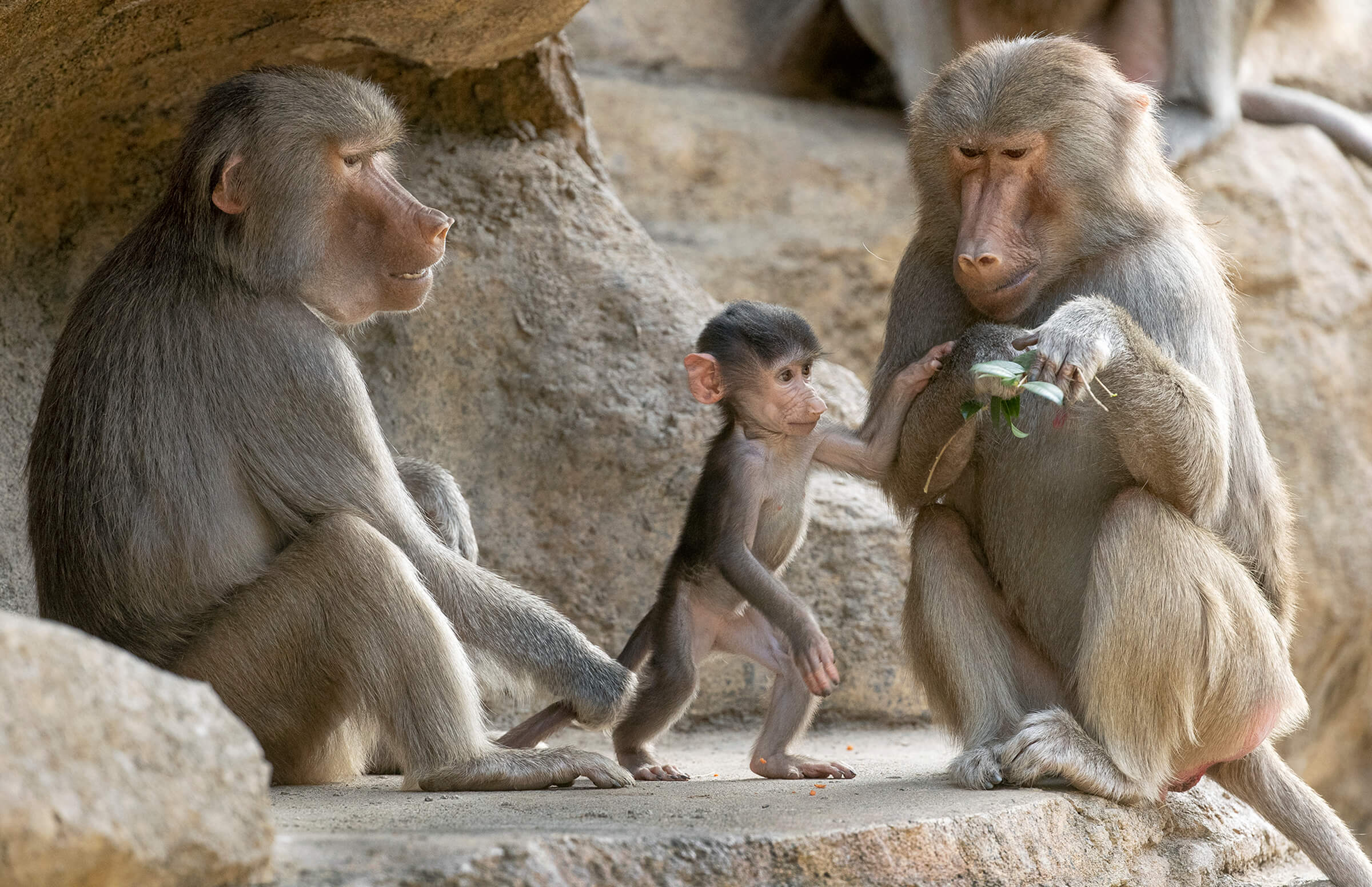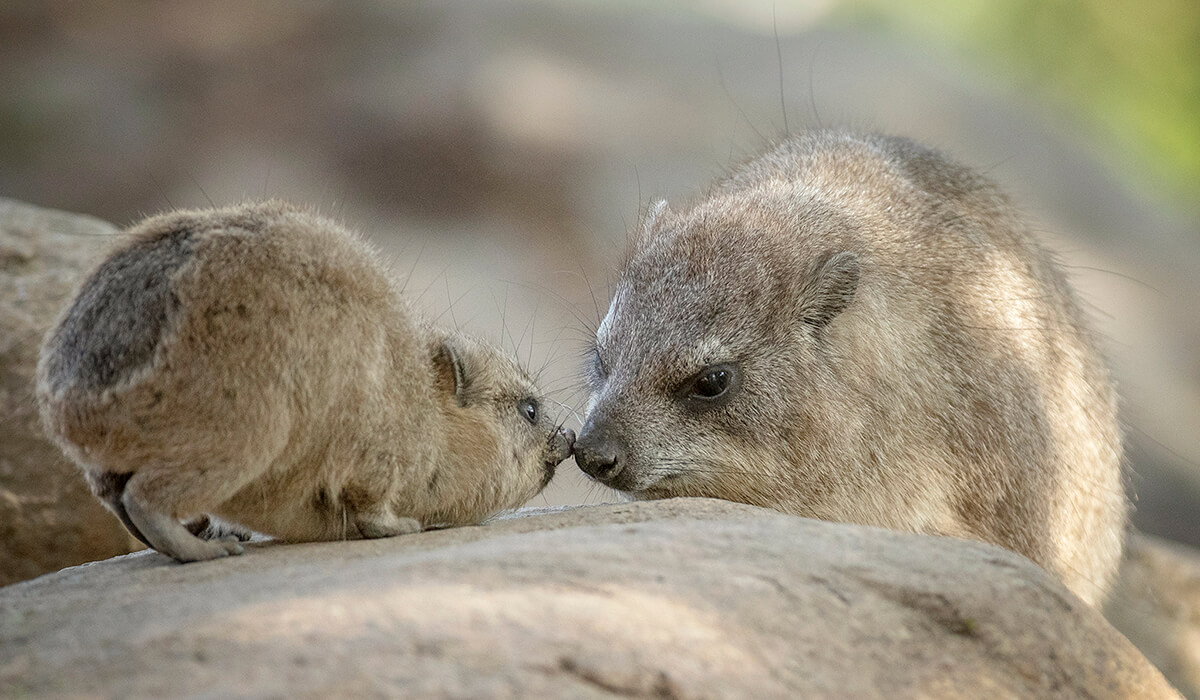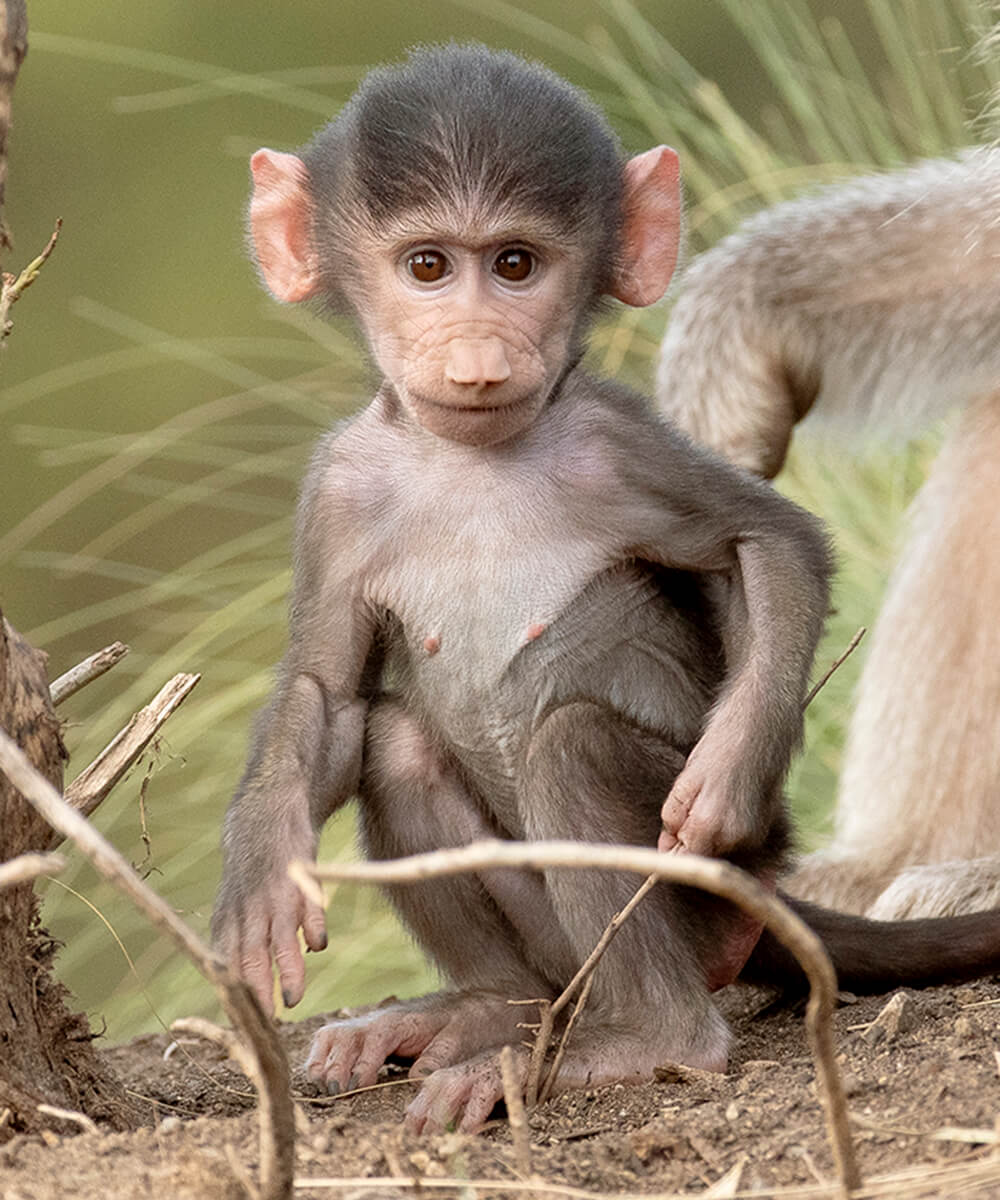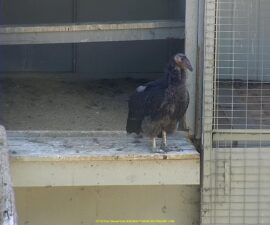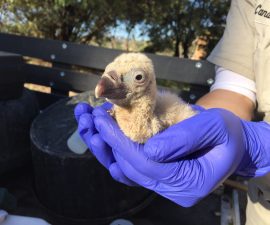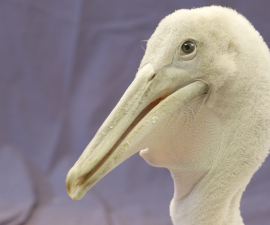Spring is usually considered the busy season for babies at the San Diego Zoo and Safari Park, but last fall brought enough births and hatchings to keep the stork—not to mention our keepers—working overtime. From a precious porcupette and adorable antelope calves to mini meerkats and tiny tortoises, there are plenty of little reasons to say “aww” as you stroll the grounds.
BY Peggy Scott and Donna Parham
Photography by Ken Bohn
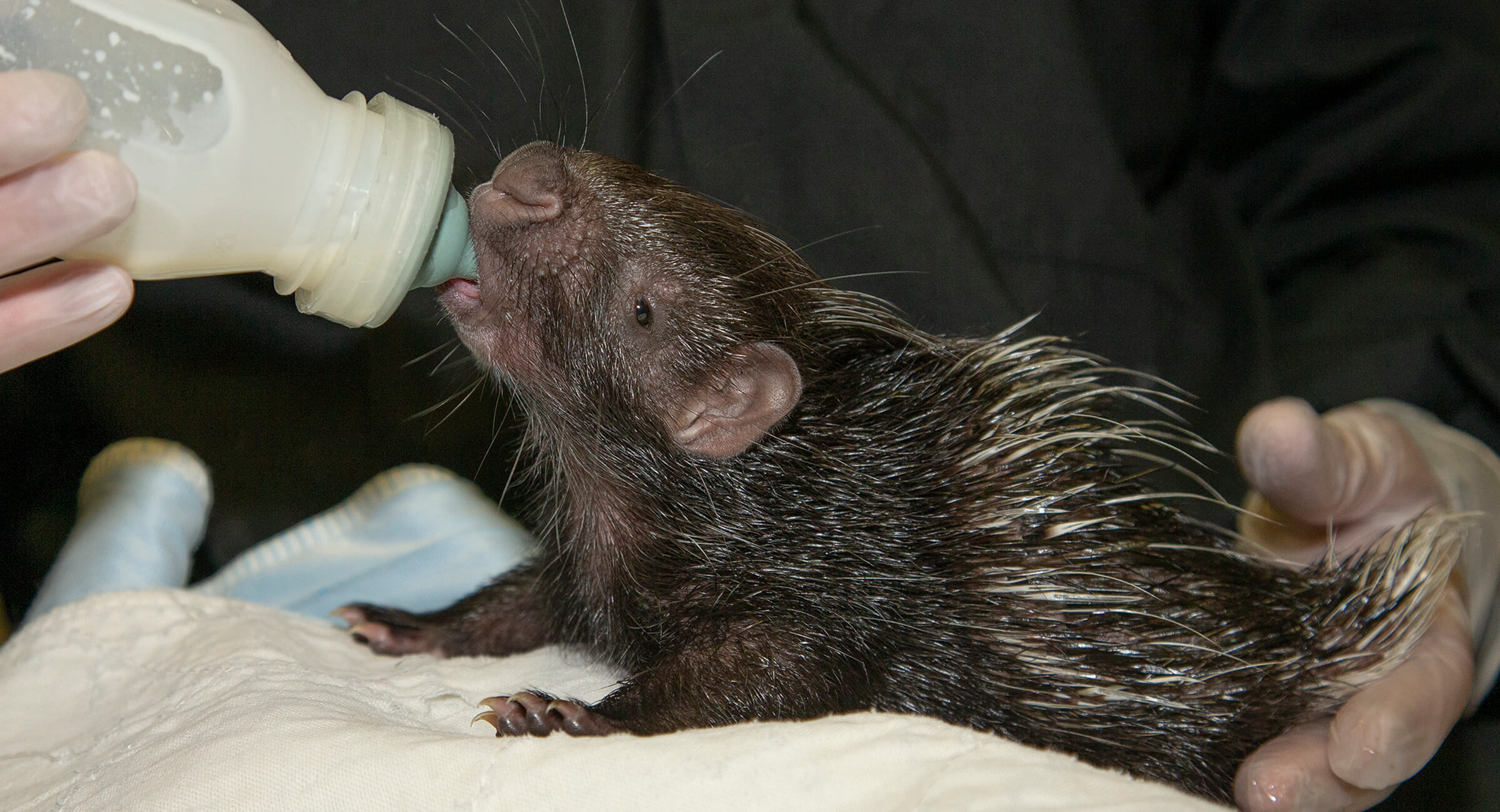
21 and Up
At the Safari Park, new babies generally stay with their mothers in their exhibits. But when plans go astray and the youngsters need special attention, they often find themselves in capable hands at the Ione and Paul Harter Animal Care Center (ACC) in Nairobi Village. “Boy, have the animals kept us busy,” says Kimberly Millspaugh, a senior keeper at the ACC. “On one day alone, November 26, we cared for 21 babies! We never know what to expect.”
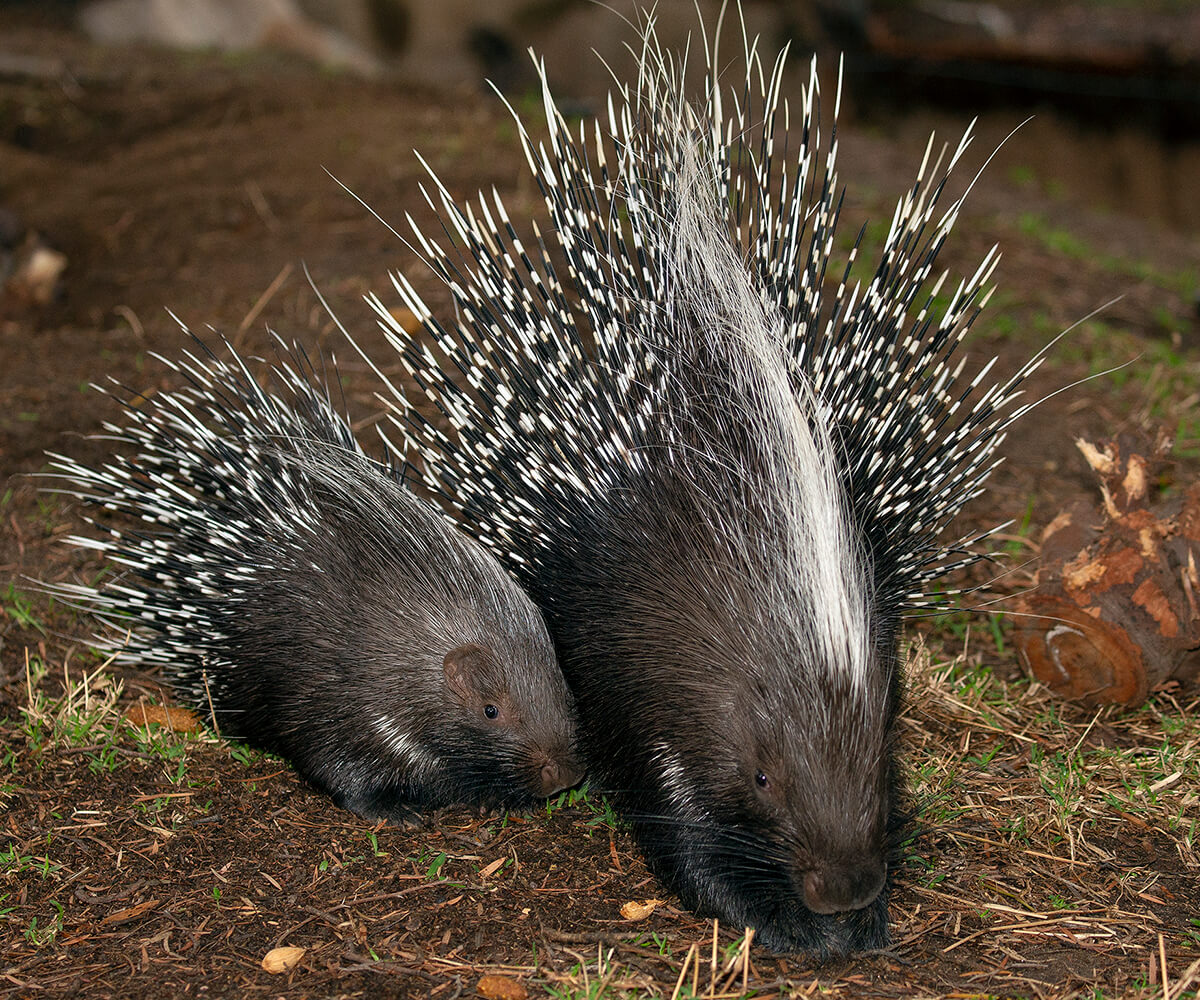
MAKING A POINT
Gizmo, our little male porcupine, grew up with his mother Cleo in their exhibit in Nairobi Village.
Earlier in the season, ACC keepers were reminded that sometimes, two babies is one too many. A female Cape porcupine, named Harley, was born on October 5 as half of a set of twins. While her mother was able to care for Gizmo, the little male, his sister was apparently more than she could handle, and the ACC staff stepped in. “She has a really sweet personality and is going to be an ambassador,” Kimberly says. “She loves scratches and cuddling with her stuffed wombat.” Kimberly is quick to note that a porcupine’s prickly appearance often belies its nature. “They have poor eyesight, so most porcupines ‘attack’ because they are easily startled.”
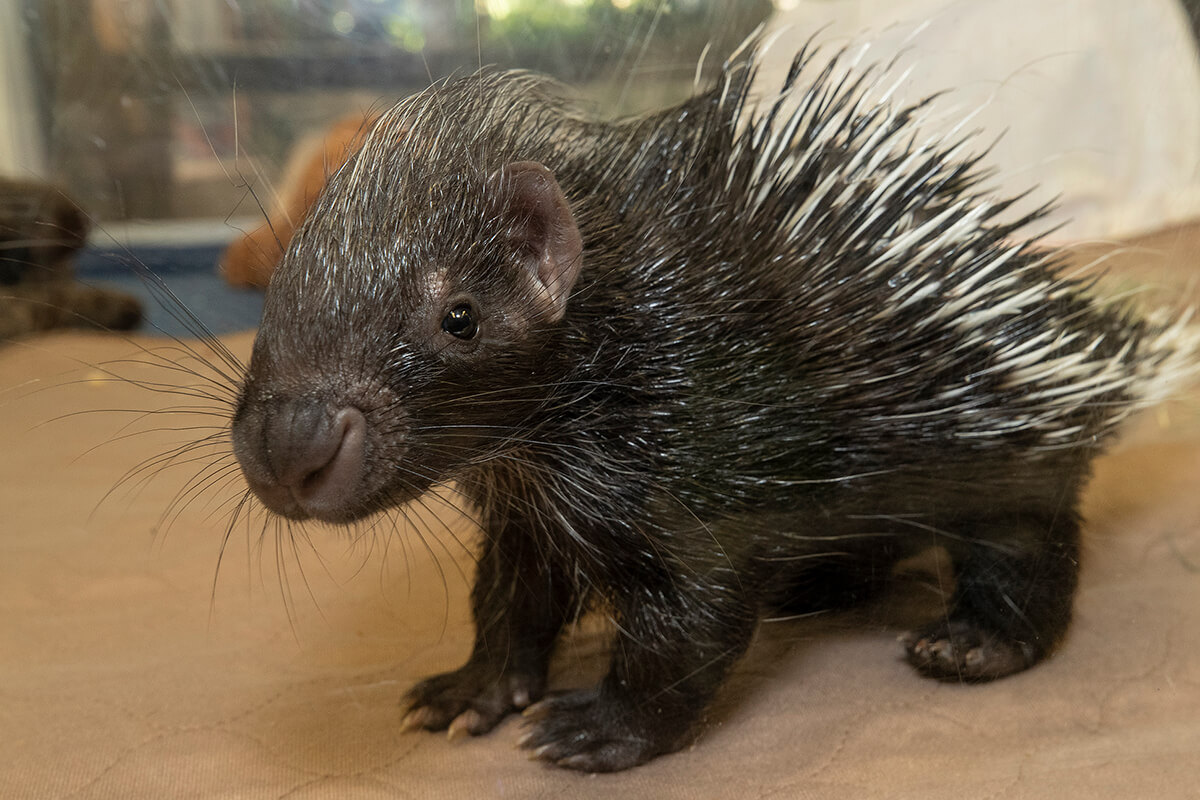
HARDY LITTLE HARLEY
The picture of porcupette health, Harley is expected to become an animal ambassador.
Health issues have also brought some impossibly cute, long-legged babies to the ACC. “Sometimes Mom can’t provide care, and sometimes they’re sick or need treatment,” says Jill Van Kempen, interim lead keeper at the ACC. “Our little muntjac [a type of deer], for example, was less than 3 pounds at birth, when they’re usually almost 4 pounds.” When youngsters are brought in from the field exhibits, it’s important to keep them warm until their antibodies develop,” Jill explains, noting that when the babies are ready, they mingle with other hoofed species in the ACC’s nursery yard. A recent visit found steenbok spending time with sitatunga and Grant’s gazelles hanging out with lowland nyala, and Burmese thamin. “We keep them until they are weaned off bottles, eating solid food well, and steadily gaining weight. Some may return to their exhibit, others may go to other zoos based on breeding recommendations to help further their species,” Kimberly says, adding that it’s hard not to grow fond of the animals in their care. “Every one has a personality and is special in its own way.”
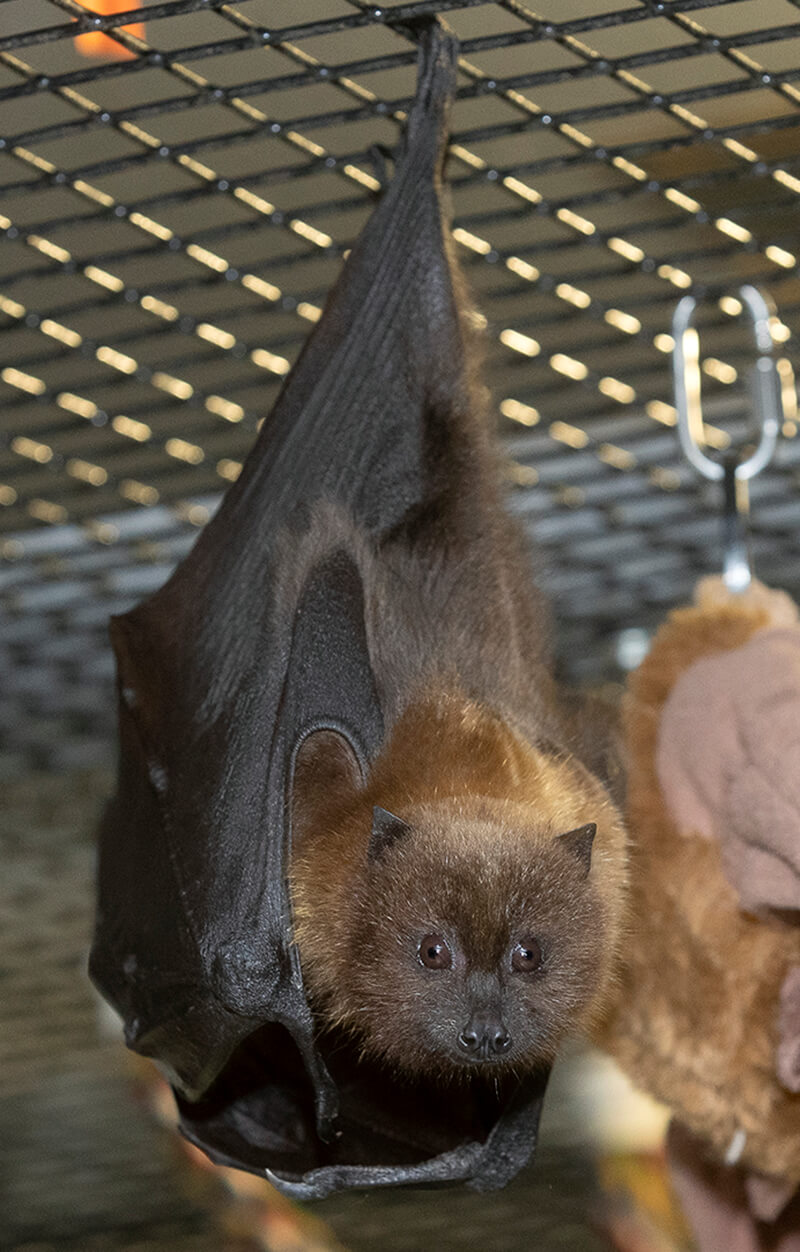
GETTING THE HANG OF THINGS
Karlita’s enclosure allows her to practice her bat skills, such as hanging and climbing.
Another Reason to Go Batty
Before cute Karlita was ready for her public debut, the five-month-old Rodrigues fruit bat was working hard on mastering her skills. “She is quite the ‘acro-bat,’” Kimberly says. “She’s a great climber and is such a curious little girl.” Karlita had a bit of a rough start. “Her mother couldn’t care for her, so we had to step to hand-raise her. We began with 11 feedings, around the clock, but now she is weaned off formula and has joined the rest of her colony.”
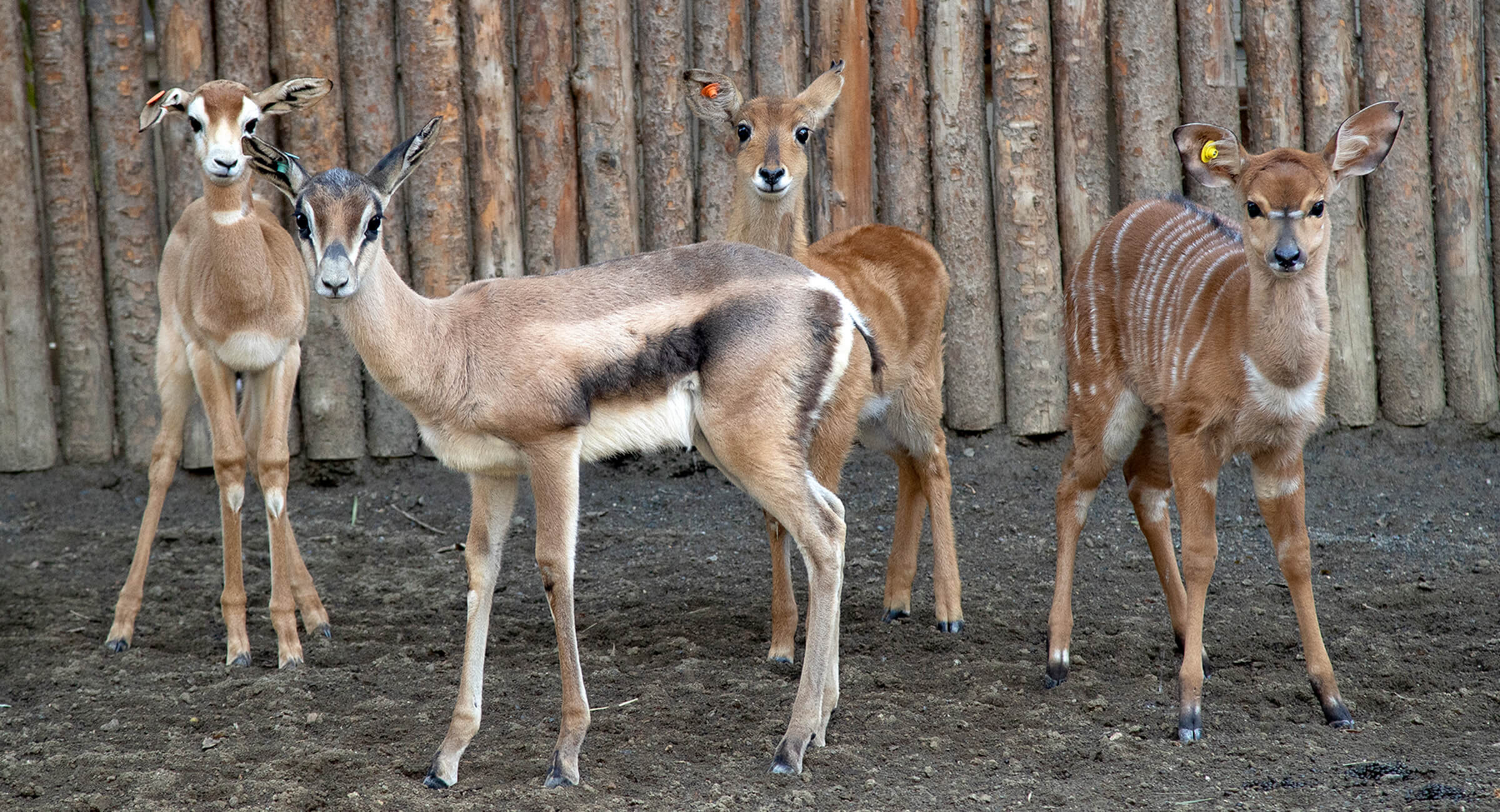
ALL TOGETHER NOW
Addra gazelle, Grant’s gazelle, Uganda kob, and Lowland nyala were among the species receiving special care in the ACC’s nursery yard.
Playing (in) the Field
One place that usually has a few—and occasionally, many—babies to enjoy is the Safari Park’s vast field exhibits. Generally speaking, when births occur, and there are no complications, the new arrivals stay with their mothers once keepers have had the chance to make sure everything is fine between mother and offspring. Some of the babies (and their moms) make that easier than others. Giraffe births are hard to miss, given the size of both mother and baby. Smaller species, on the other hand, can turn head counts into a game of hide and seek. “Nile lechwe kids, ‘tuck’ [hide] very well,” says Matt Gelvin, who is not only a lead keeper at the Park but also the studbook keeper and Species Survival Plan (SSP) coordinator for both the barasingha and Thomson’s gazelle. “Sometimes it can take keepers all day to find them.”
Sometimes, that game of hide and seek is easier for keepers to win than others. “Our fringe-eared oryx calf will tuck wherever her mom leaves her,” Matt explains. “Even if that’s in the middle of the sand or an open field. With or without cover, she will lay, motionless, until Mom comes to nurse her.”
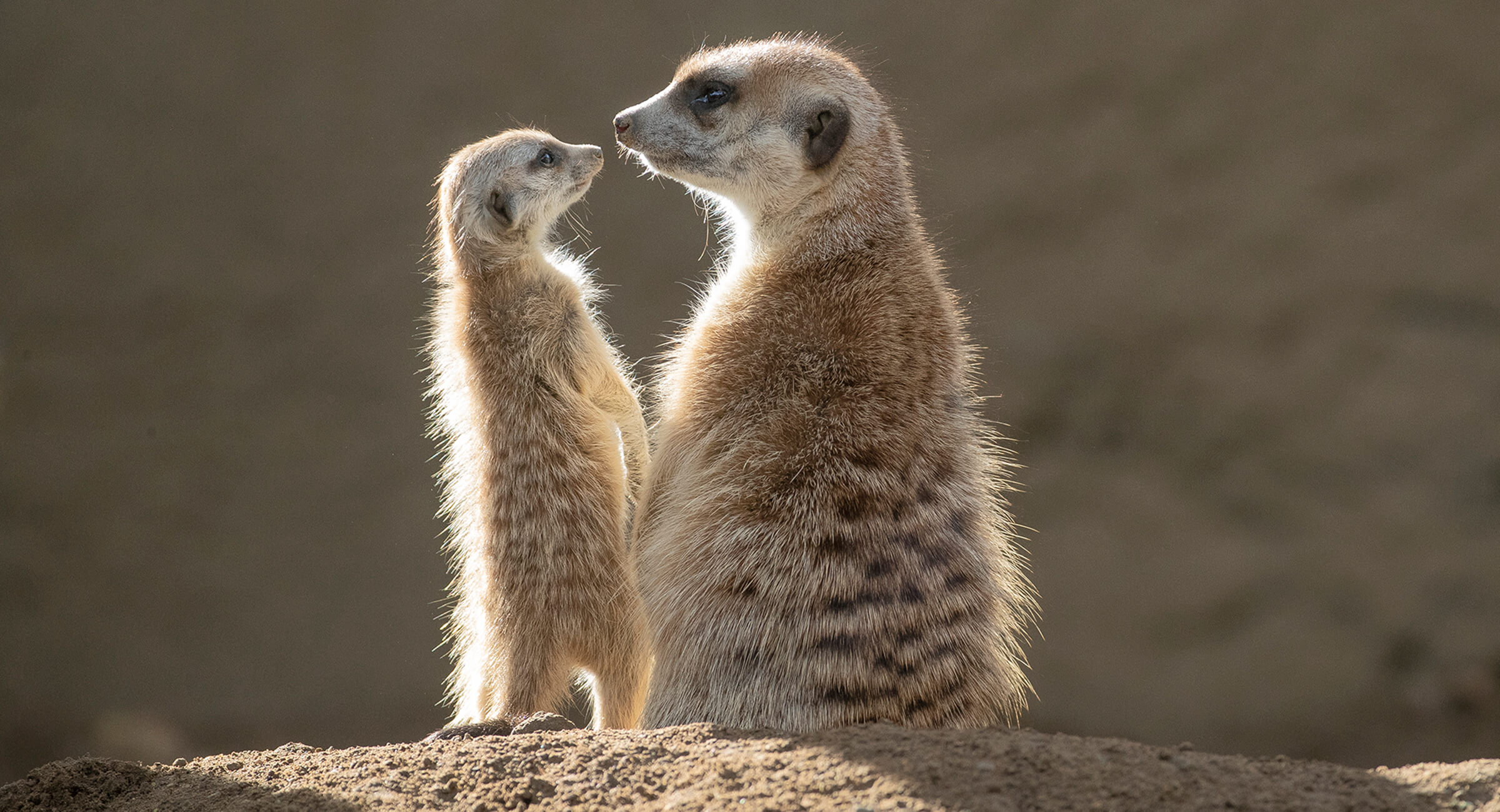
Raising the Cuteness Quotient at the Zoo
As if the meerkats at the Zoo’s Africa Rocks kopje habitat weren’t adorable enough already, the dominant pair (which—in a meerkat mob—are the only animals that breed) recently brought two new female pups into the world. According to keeper Lacy Pearson, the pups have distinct personalities. “One is braver and more adventurous than the other,” says Lacy. “She spends a lot of time hanging out with her dad.” The less adventurous sib is “more likely to bolt down a hole,” and spends more time with female group members.
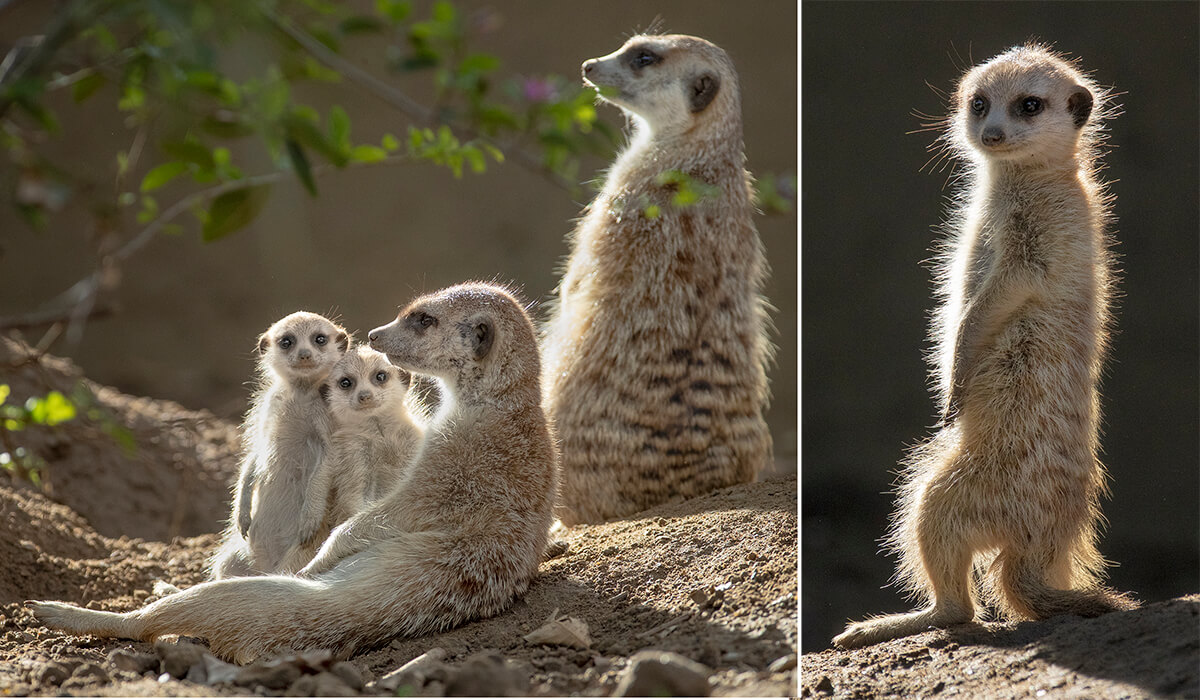
LOTS TO LEARN
Adult meerkats are role models and babysitters for pups. Looks like one youngster (at right) has already learned the iconic meerkat “sentry” behavior.
“The whole mob babysits; they take turns,” says Lacy. One adult female even helps mom suckle her pups; it’s typical for helper females in a meerkat mob to lactate when pups are born, even if they’ve never been parents themselves. “It’s good that there are a bunch of adults to teach them and care for them, because even when they are weaned, at about nine weeks, they are still not really independent,” says Lacy. “They have so much to learn. The older meerkats teach them what to eat—and how to eat it safely. That’s important in the wild, because meerkats eat scorpions.” Scorpions aren’t on the menu for the Zoo meerkats, which eat a carnivore meat diet along with fruits, veggies, hard-boiled egg, and kibble “that keeps their teeth nice and clean and sharp.”
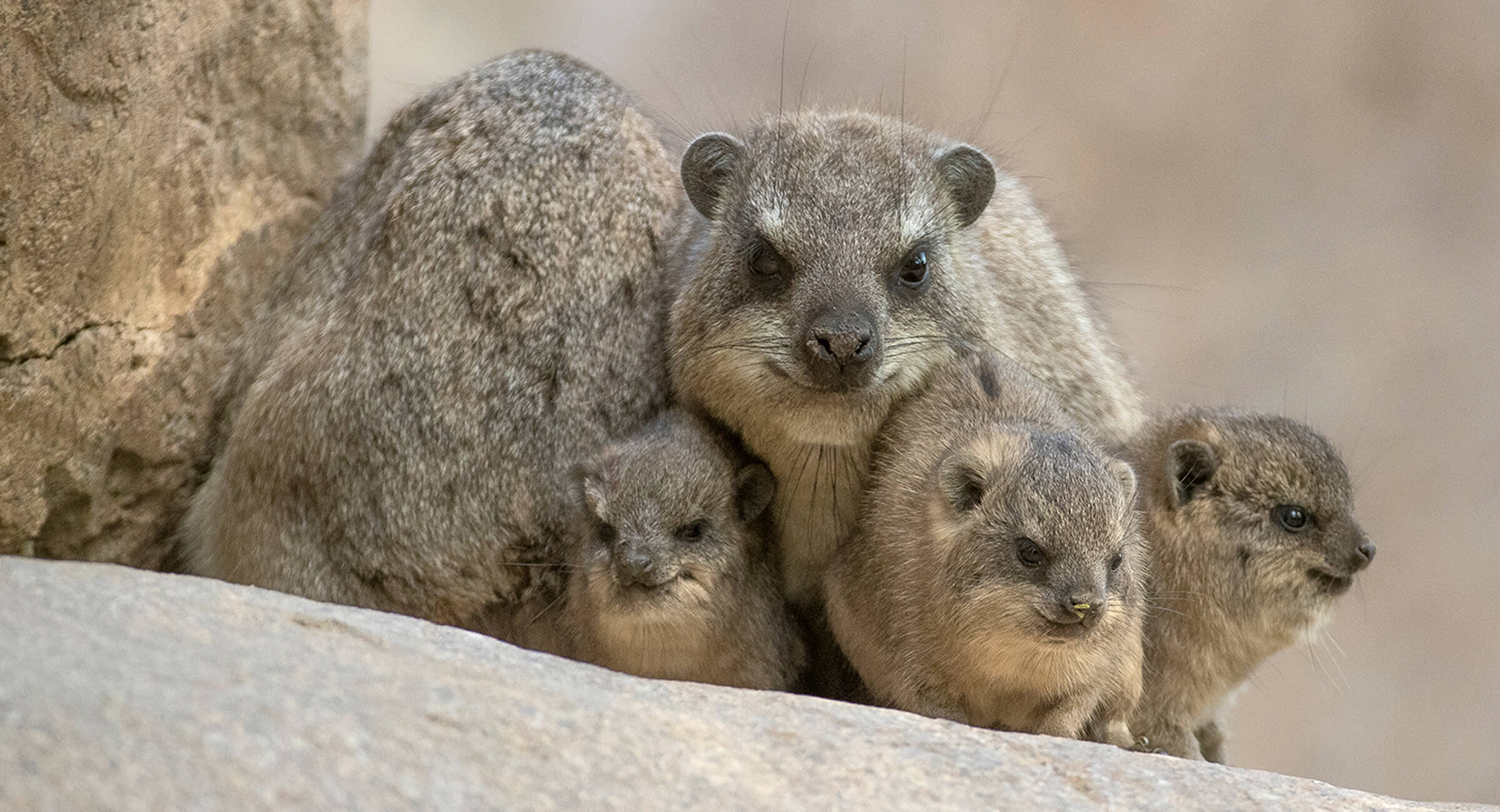
Hello, Hyrax
“Look for the boulders with eyes,” says Lacy. “That’s how to spot the rock hyrax.” Follow her advice to see the new nursery group of four rock hyrax pups—from three different moms—in the Zoo’s kopje exhibit. “They’re born looking just like mini adults,” says Lacy. “Mom cleans them up and gets them steady on their feet, and then the other group members come up to introduce themselves.” Within two hours of birth, most hyrax pups can climb rocks and run around.
When they were old enough to be handled, they were examined, vaccinated, sexed, and microchipped. Lacy says that the latest arrivals are “doing fantastic, even one that had a bit of a rough start,” taking about a week, and the encouragement of all three moms, to master boulder climbing. Lacy says that the adult male in the kopje, while not the pups’ father, “Always has eyes on the pups, and is as protective as though he were the father,” even going so far as to alert the pups when he sees a keeper approaching. You may see the pups munching browse, hay, pelleted food, or root veggies, but they’ll also continue to nurse until they’re about six months old.
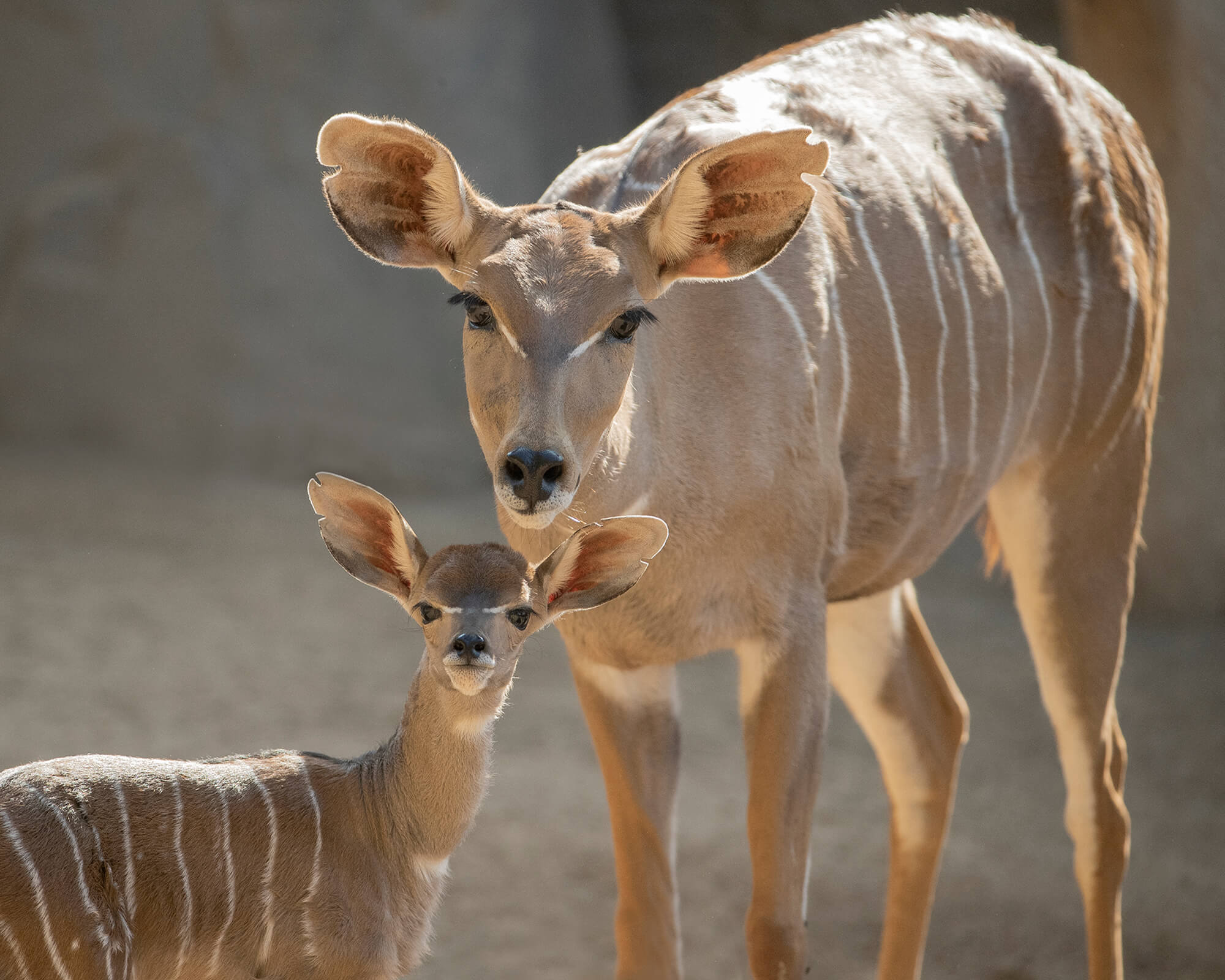
CUTE KUDU
Kudus share an exhibit with Spekes’s gazelles on Park Way, across from Polar Bear Plunge, at the Zoo.
Four Tiny Hoofs
After about 8 months of gestation and an uneventful birth (the best kind!), a 14-pound lesser kudu calf arrived at the Zoo. The youngster “really likes her dad ‘Kegel,’ and spends a lot of time following him around,” says senior keeper Matthew Price, who admits to a special fondness for the antelope species. “Lesser kudu are some of the most gentle and tractable animals I’ve worked with,” he says. In spite of the fact that they are wild animals, “Most will approach willingly, especially if I have biscuits or browse.”
Bouncing Baby Baboon
In the Africa Rocks hamadryas baboon habitat, pink-faced Lisa Marie jumps into her dad Elvis’s arms. She only has time for a quick cuddle, before mom Daphne—clinging firmly to the baby baboon’s tail—gently tugs her away. “For the first few weeks, Daphne held onto the baby with one hand,” says keeper Jade Price. “Now she’s a fairly low-key mom, but she makes sure to keep her baby close.”
As the experienced mother baboon effortlessly scales what looks like sheer rock, Lisa Marie clings tightly to her fur—but soon hops to the ground. “She’s anxious to be mobile,” says Jade. “Every once in a while, Daphne lets her roam a bit, but she generally keeps a hand on her tail.” Loosely attached to mom this way, Lisa Marie scampers and socializes with the baboon band. One of Elvis’s favorites, her mom has good relationships with the other baboons, and the females, especially, are enamored with Lisa Marie. “They would all hold her if Daphne let them,” says Jade, who says that her favorite thing about the baboons is seeing their shifting social dynamics. “It is so much fun seeing their relationships develop,” she says.
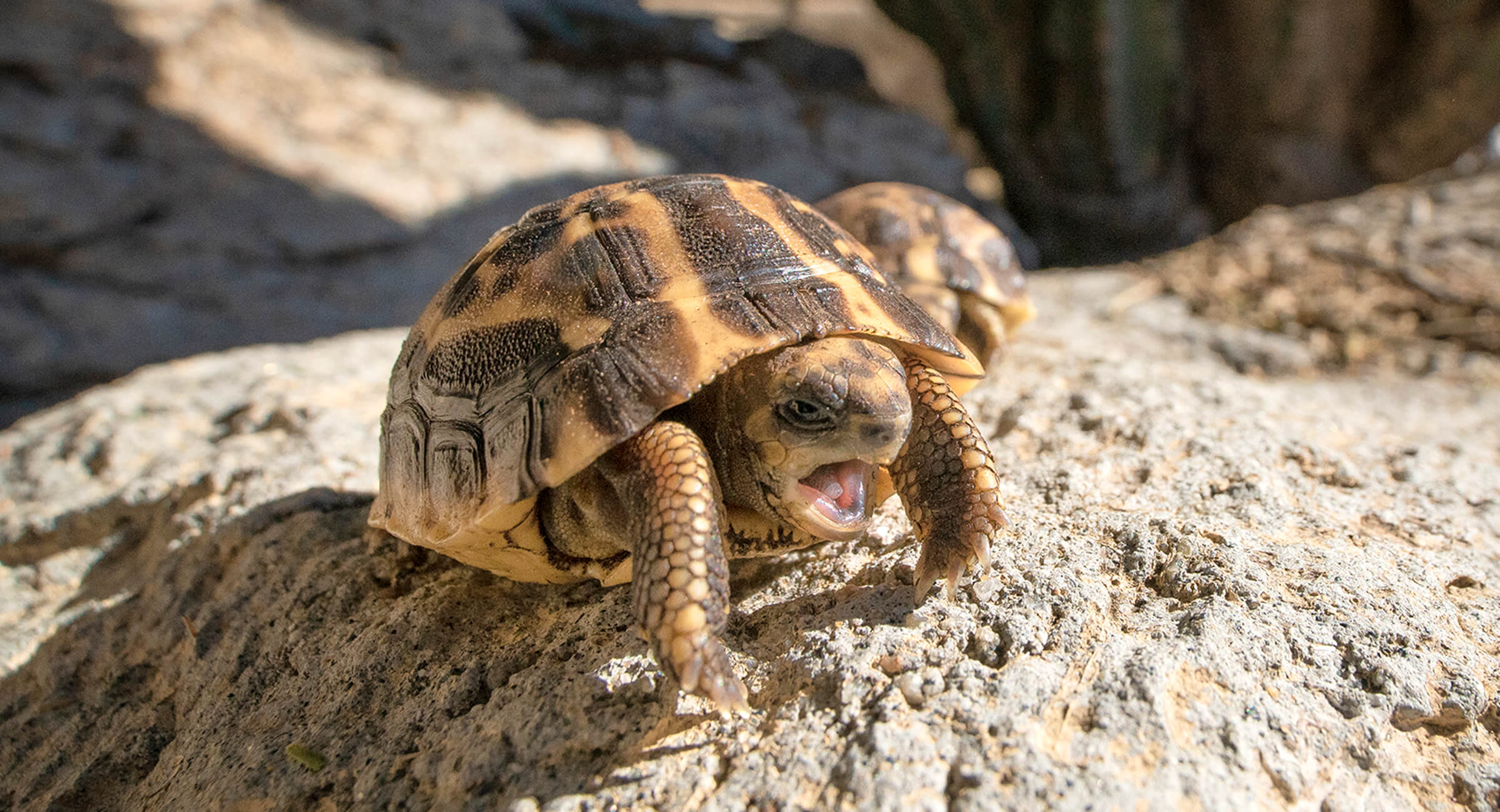
Slow and Steady
Meanwhile, in the Zoo’s Reptile House, keepers welcomed hatchlings of two Critically Endangered tortoise species; both species are threatened by collection for the pet trade as well as habitat loss. In their native habitat in the dry forest of southern Madagascar, spider tortoises Pyxis arachnoides breed during the wet season. During the dry season, they estivate (lower their metabolism to the point of dormancy), burying themselves under leaf litter, roots, or sand for months at a time. “They basically shut down in winter,” says senior keeper Rachael Walton. “So, we give the adults dry matter, so they can snuggle in,” as they would in the wild.
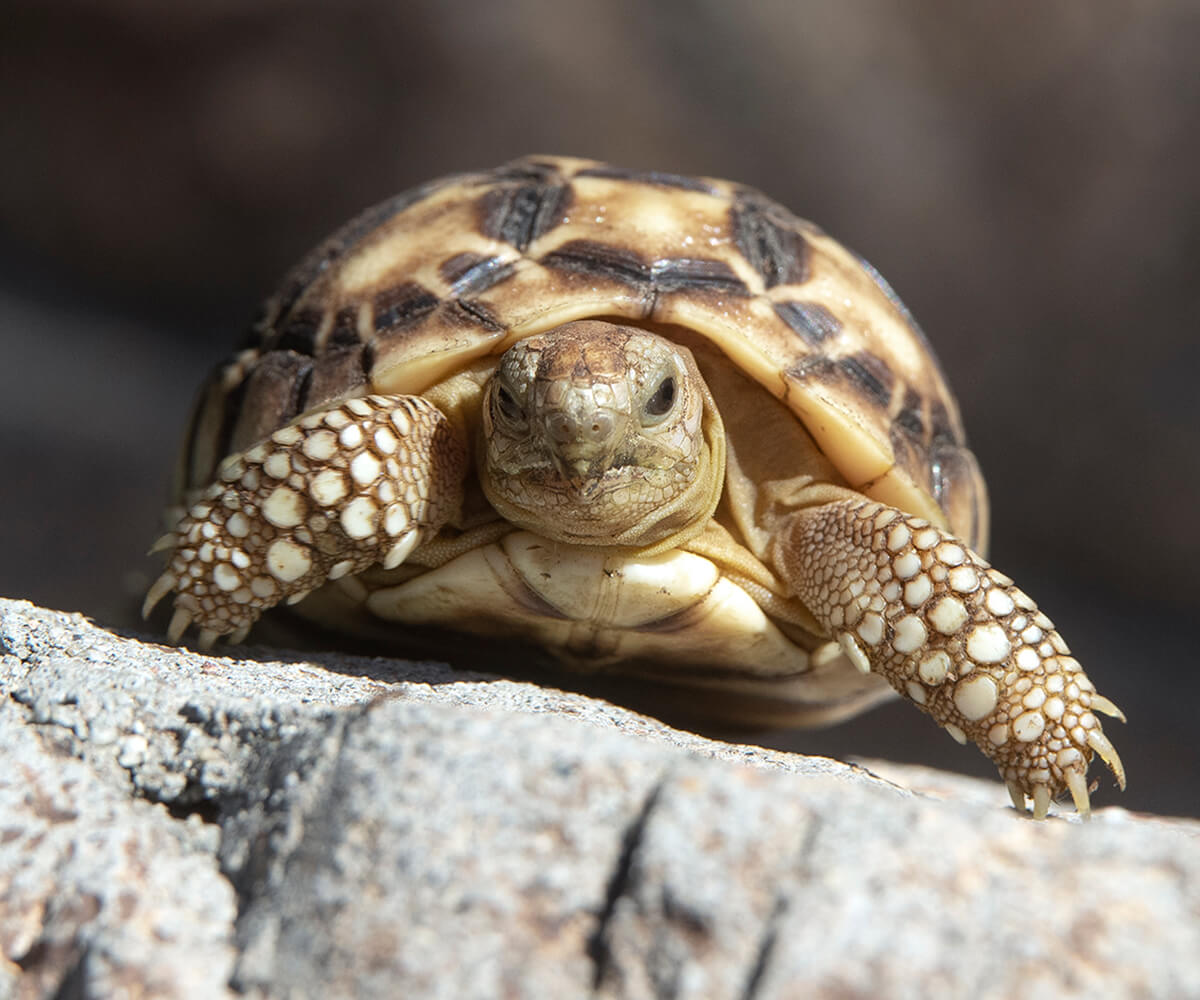
A STAR IS HATCHED
To get Burmese star tortoises to breed successfully, keepers maintain a social group—two males and one female. Rachael explains: “Competition between males is important, because the interaction triggers higher testosterone levels.” The Zoo provided a home for this Burmese star tortoise’s parents after they were confiscated during a smuggling operation. Pictured above: northern spider tortoise.
After a long, dry, rest period, the tortoises emerged to mate, and October saw the hatchings of two of the three subspecies: the common spider tortoise P. a. arachnoides and northern spider tortoises P. a. brygooi. The other notable hatchings were six Burmese star tortoises Geochelone platynota. These elusive tortoises live in dry forests of Myanmar, where they are rarely observed in the wild.
Babies are out in force at the Safari Park and the Zoo, so plan a visit soon. And just imagine what spring will bring!

